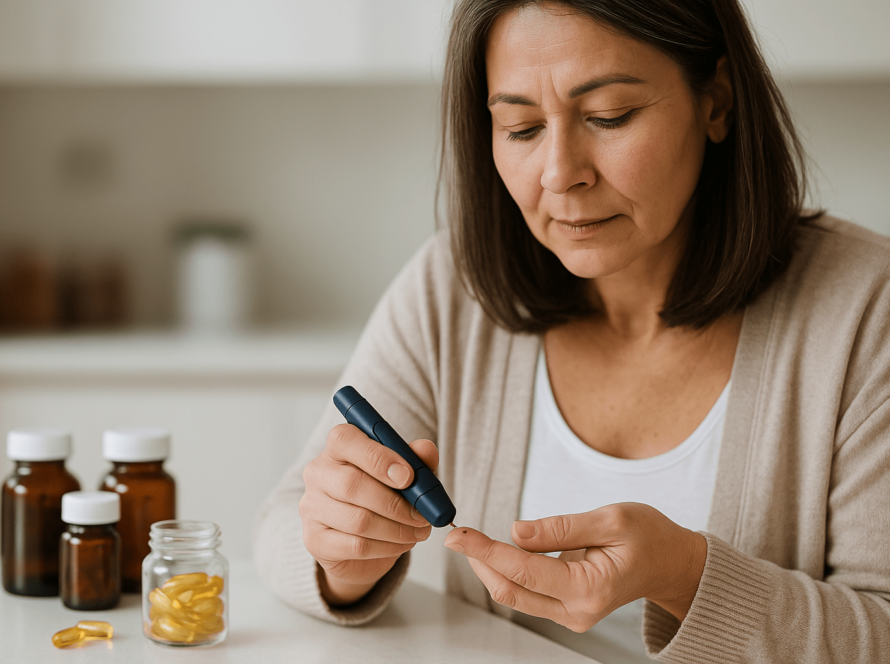A Guide to Women’s Nutrition In Your 20s, 30s, & Beyond
Your body never stays the same, and honestly, neither should your diet. What you needed at 21 is wildly different from what your body craves at 41 or 61. As the years pass, hormones shift, metabolism slows, energy levels change, and new health priorities pop up out of nowhere.
What you eat starts to matter more than you might think, not just for weight, but for mood, sleep, strength, and even your skin. Women’s nutrition by age is a real and powerful concept, and when you understand it, everything falls into place. Food becomes more than just fuel it becomes your body’s support system through every decade.
Why Women’s Nutrition Changes Throughout Life
Hormones do a lot more than mess with your mood. They affect how your body stores fat, absorbs nutrients, and even how hungry you feel. From your first period to menopause and everything in between, nutrition can help balance the ride.
Your metabolism also changes, sometimes more rapidly than you’d like. What worked in your 20s may not be enough in your 40s. That’s not failure; it’s just biology.
And then there’s stress, work, family, aging parents, babies, breakups, everything. It all adds up. Food becomes fuel, medicine, and self-care rolled into one.
Women’s Nutrition by Age: What Your Body Needs in Every Decade
It’s not about obsessing over food, but about giving your body what it needs, when it needs it. Different decades require different things of you, so let’s break it down.
Nutrition for Women in Their 20s
In your 20s, you’re building the health you’ll carry for decades to come. You’re laying the foundation for strong bones, clear skin, sharp thinking, and maybe future pregnancies. What you eat now sets the tone for what you eat later.
Top nutrients to focus on:
- Iron (to prevent fatigue from monthly cycles)
- Calcium and Vitamin D (your bones are still storing up)
- Folate (especially if babies are on your future list)
- Omega-3s (for mood, brain, and hormonal balance)
Quick tip: Skip energy drinks and try smoothies with spinach, flaxseed, and banana. Meal-prep protein bowls on Sundays to save your future self a headache.

Healthy Nutrition Tips for Women in Their 30s
Your 30s are a beautiful mess: career, kids, maybe both. Your body is busy, and it needs more support. This is also when many women start thinking about pregnancy or managing early signs of hormonal shifts.
Pregnant or not, healthy eating remains essential: protein, DHA, and iron are crucial now. Your blood volume increases if you’re expecting, and that’s no joke; you need fuel. Think lean meats, dark leafy greens, and whole grains.
Feeling low energy? You’re probably not broken; you’re just not fed right. Food can fix more than coffee ever could.
Women’s Nutritional Needs in Their 40s
Your 40s are like a sneak peek into the next chapter. Hormones begin to shift, and metabolism no longer plays fair. This is when sugar cravings and fatigue can creep in fast.
Support your body with fibre, protein, and healthy fats. Focus on maintaining blood sugar balance, which means consuming fewer pastries and opting for more balanced meals. You’ll feel more in control, even if life feels like a whirlwind.
One simple habit? Add a veggie to every meal. Doesn’t matter what, just add it.
Diet for Women Over 50
Post-menopause is a whole new world. Your body needs more calcium, more protein, and honestly, more love. Muscle mass drops, bones weaken, and heart health becomes a priority.
Here’s what helps:
- Calcium (milk, tofu, leafy greens)
- Vitamin D (sunshine, salmon, supplements)
- B12 (your body doesn’t absorb it as well now)
- Fibre (to keep digestion and cholesterol in check)
A sample day could look like:
Meal | Example Food |
Breakfast | Greek yogurt with chia and berries |
Lunch | Grilled salmon, quinoa, sautéed kale |
Dinner | Veggie stir-fry with tofu and brown rice |
Eat to stay strong. That’s the goal.
Menopause Nutrition Tips to Support Hormonal Health
Hot flashes, mood swings, stubborn belly fat, yeah, menopause can be a wild ride. But your plate can help you smooth the bumps.
Add foods rich in phytoestrogens, such as soy and flaxseed. They mimic estrogen gently and may ease symptoms. Omega-3s like walnuts and fatty fish are your best friends here, too.
Watch out for sugar, caffeine, and wine. They can make symptoms worse. And no, you don’t have to cut them forever, just get smart about it.

How to Build a Sustainable Women’s Health and Nutrition Guide
Don’t overthink it. Just build meals with three key components: a protein, a carbohydrate, and a color. Add water, and you’re golden.
Supplements? Only if you’re missing nutrients or your doctor says so. Real food still wins.
Here’s what helps stick to it:
- Plan dinners for the week (just dinners — that’s enough).
- Keep frozen veggies in your freezer.
- Make breakfast the night before if mornings are chaotic.
It’s not about being perfect. It’s about doing what you can, when you can.
Final Thoughts
Your body has carried you through every chapter, the sleepless nights, the long workdays, the milestones, and the heartbreaks. It has shown up for you, even when you forgot to eat breakfast or pushed it past its limits. It deserves care, attention, and a little more love with each passing year.
Women’s nutrition by age is not some passing trend. It is a way of honoring the changes, the growth, and the resilience that define your life. Nourishing your body through every stage is not about chasing perfection. It is about showing up for yourself in small but powerful ways.
No matter your age, you can choose foods that help you feel clearer, stronger, and more like yourself. Start where you are. Be kind, be consistent, and trust that your body will thank you.
If you’re ready to take that next step, explore how Lifespire’s memberships can support your wellness journey.


